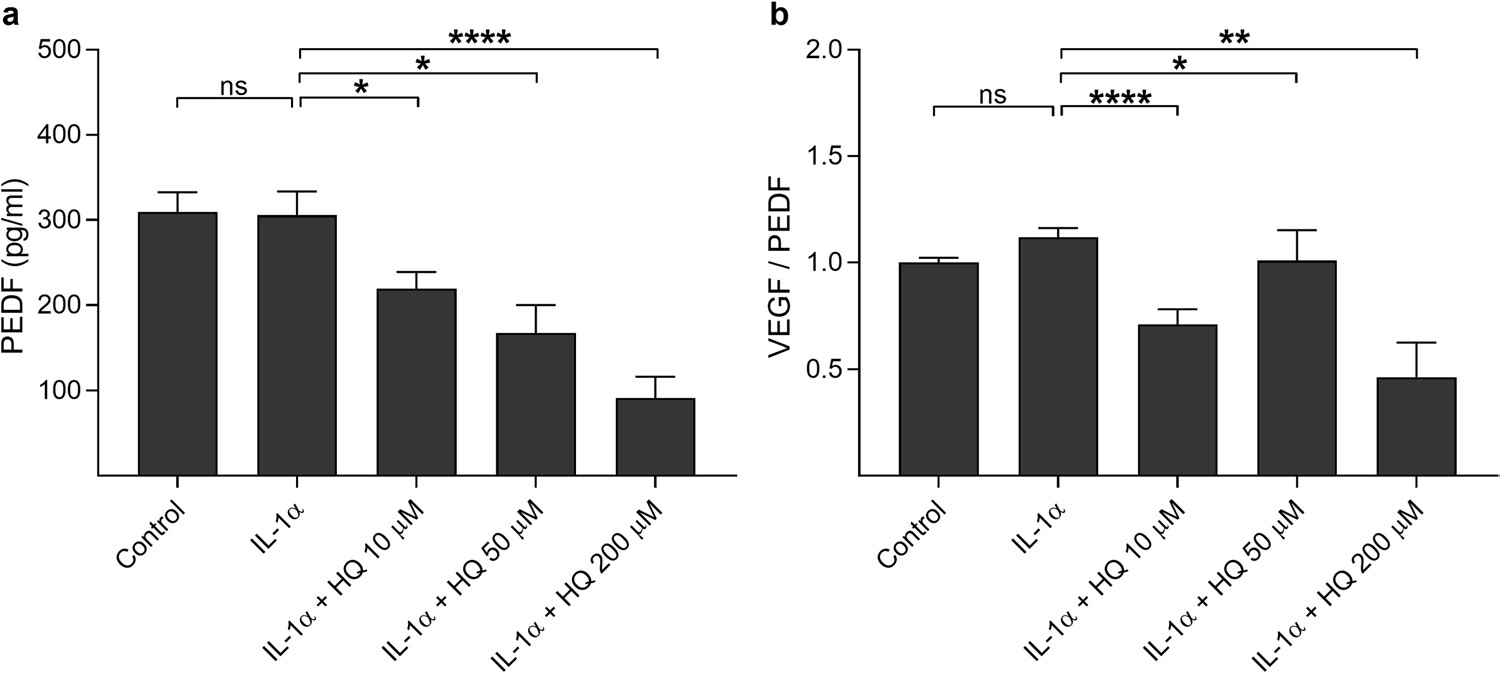Utilizing advanced Induced Pluripotent Stem Cell (iPSC) technology to foster Age-Related Macular Degeneration (AMD) model discovery, Creative Biolabs offers clients premium Pigment Epithelium-Derived Factor (PEDF) secretion assay services. This aims to assist clients in screening and evaluating therapeutic drugs targeting AMD, providing strong support for their research and development efforts.
PEDF is one of the strongest natural anti-angiogenic factors known, capable of effectively inhibiting the formation of new blood vessels. Wet AMD involves the growth of abnormal blood vessels beneath the macular area (i.e., neovascularization), which are often very fragile and prone to leaking blood and fluid, leading to rapid deterioration of vision. In AMD, the mechanism of action of PEDF is primarily through its anti-angiogenic function. PEDF can inhibit the formation and growth of abnormal blood vessels beneath the retina, thereby helping to prevent or slow the progression of wet AMD. Additionally, PEDF also has neuroprotective effects, capable of protecting retinal cells from damage. Therefore, PEDF plays a key role in the prevention and treatment of AMD and has become an important target for the research and development of new therapeutic strategies. By increasing PEDF levels or mimicking its action, new treatment options may be provided for AMD patients.
In AMD research and the development of therapeutic drugs, the iPSC-facilitated discovery model offers a unique and powerful platform. This model utilizes iPSC technology to reprogram somatic cells (such as skin cells or blood cells) of AMD patients into iPSCs, which have the capability to differentiate into any type of human cell, including retinal cells. Through this method, we can create AMD cell models in the lab, one of the core applications of which is the PEDF secretion assay, used to screen and evaluate potential therapeutic drugs for AMD.
Q1: What types of drugs can clients provide for PEDF secretion assays?
A1: Known PEDF activators, new compounds, or other potential therapeutic drugs.
Q2: How to interpret PEDF secretion assay results?
A2: By comparing PEDF levels in drug-treated and untreated (control) cells, the potential of these drug candidates to promote PEDF production can be assessed.
To monitor and assess the behavior of anti-angiogenic factors in the expression changes of VEGF (Vascular Endothelial Growth Factor) in RPE cells due to inflammation and hydroquinone exposure, researchers have accurately measured PEDF levels through ELISA, aiming to understand how inflammation and environmental stress affect the angiogenic and anti-angiogenic balance in RPE cells.
 Fig.1 The effect of hydroquinone (HQ 10 μM, 50 μM, 200 μM; 18 h) on the PEDF secretion.1
Fig.1 The effect of hydroquinone (HQ 10 μM, 50 μM, 200 μM; 18 h) on the PEDF secretion.1
Creative Biolabs specializes in PEDF secretion assay services, aiming to assist clients in screening and evaluating potential therapeutic drugs for AMD through the use of iPSC-facilitated AMD discovery models. Our services focus on evaluating the anti-angiogenic effects of candidate drugs, providing key support for your research. If you wish to explore your therapeutic candidates further, please do not hesitate to contact us.
Reference
For Research Use Only. Not For Clinical Use.